
Complete Guide to Visiting Marrakech, Morocco
Marrakech, the Red City of Morocco, is a mesmerizing blend of ancient traditions and modern energy. It’s a city where vibrant souks, opulent palaces, and bustling squares coexist with luxury hotels, rooftop cafes, and contemporary art galleries. Whether you’re drawn to the city’s rich history, intrigued by its chaotic yet colorful markets, or simply want to soak up its unique atmosphere, Marrakech offers something for everyone. In this guide, we’ll dive into the best things to see and do, where to stay, what to eat, and practical tips to make your trip unforgettable.
A Brief History of Marrakech
Founded in 1070 by the Almoravid dynasty, Marrakech quickly grew into an imperial city and a hub for trade, culture, and learning in North Africa. It served as the capital of Morocco for several centuries, and today it is one of the country’s most visited cities. Known for its stunning pink and red-hued buildings, Marrakech is a city rich in Berber, Arab, and Andalusian influences, earning its place as a cultural gem in Morocco.
When to Visit Marrakech
Marrakech enjoys a hot, semi-arid climate, with scorching summers and mild winters. The best time to visit is during spring (March to May) and fall (September to November) when the weather is warm but not overwhelmingly hot, allowing for comfortable sightseeing.
-
- Spring (March to May): Mild temperatures make this the ideal time for outdoor activities like exploring the souks, visiting gardens, and day trips to the Atlas Mountains.
- Fall (September to November): Similar to spring, the weather is comfortable, with fewer tourists compared to the peak summer season.
- Winter (December to February): Days are sunny and mild, though nights can be quite chilly. This is a great time to visit if you prefer fewer crowds and don’t mind layering up in the evening.
- Summer (June to August): Expect extremely high temperatures during the day, often reaching over 40°C (104°F). If you visit during summer, plan activities for early mornings or late afternoons to avoid the midday heat.
Top Things to Do in Marrakech
Marrakech is a sensory feast, with its winding medina streets, exotic smells, and constant hum of activity. Here are the must-visit attractions and experiences in Marrakech.
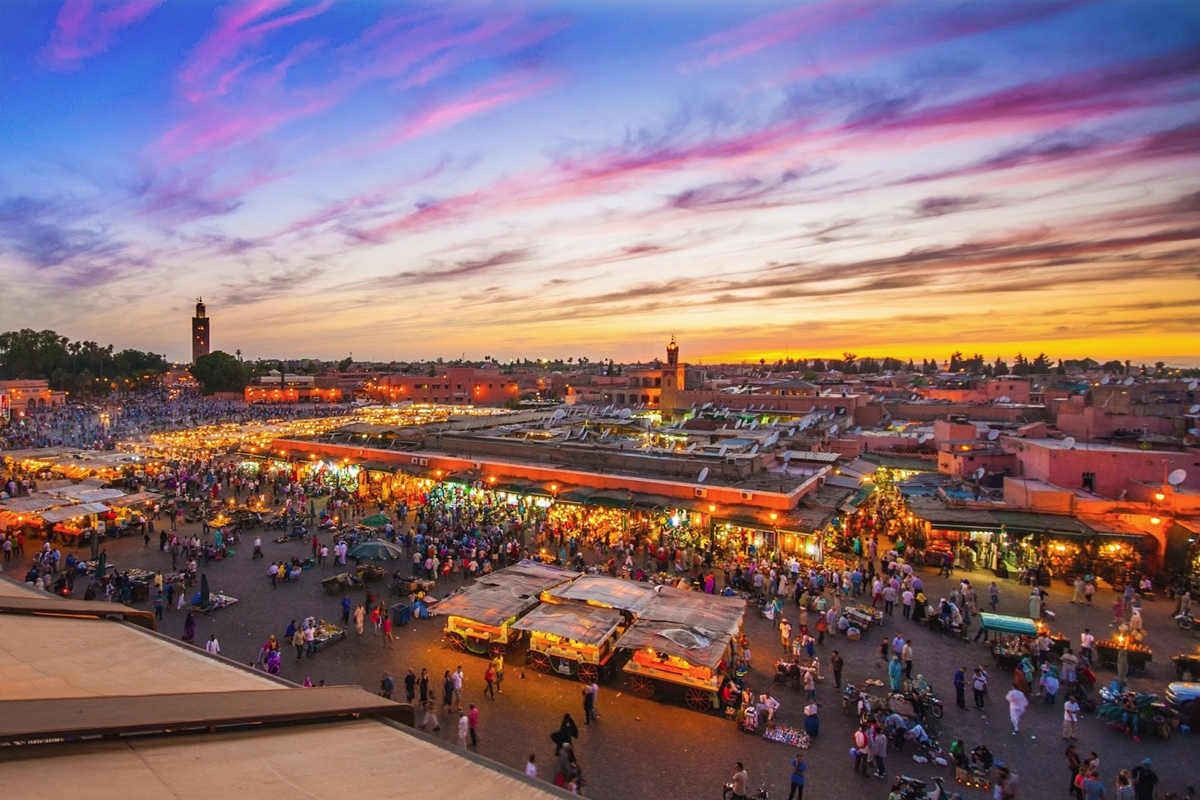
Explore the Medina and Jamaa El Fna
The heart of Marrakech is its bustling medina (old town), and no visit is complete without immersing yourself in its chaotic yet captivating atmosphere.
-
- Jamaa El Fna: This world-famous square comes alive in the late afternoon with snake charmers, storytellers, musicians, and food stalls serving up traditional Moroccan dishes. As the sun sets, the square transforms into a lively night market and entertainment hub.
- The Souks: The labyrinthine souks (markets) surrounding Jamaa El Fna are packed with stalls selling everything from spices and leather goods to jewelry and ceramics. Bargaining is expected, and getting lost in the maze of alleyways is part of the fun.
- Koutoubia Mosque: Located just a short walk from Jamaa El Fna, the Koutoubia Mosque is the largest in Marrakech. While non-Muslims cannot enter, its towering minaret is an iconic symbol of the city and can be admired from the outside.
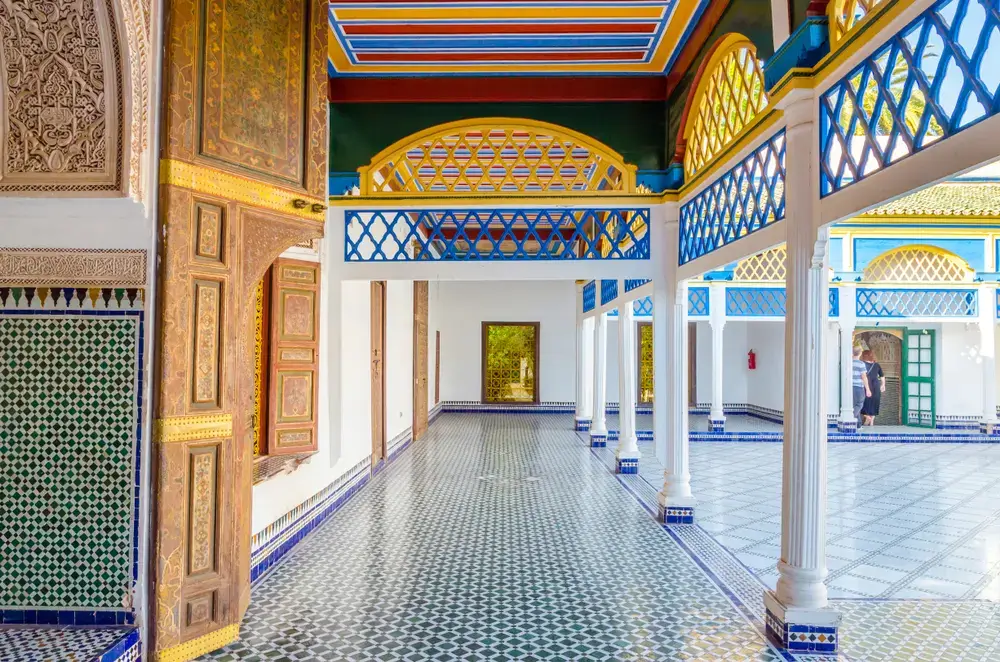
Visit Palaces and Historical Sites
Marrakech is home to stunning palaces and historical landmarks that reflect its rich past.
-
- Bahia Palace: A masterpiece of Moroccan architecture, Bahia Palace was built in the late 19th century and features intricate woodwork, stucco, and zellij tilework. Its lush courtyards and gardens offer a peaceful retreat from the city’s hustle and bustle.
- El Badi Palace: Once a grand palace built by Sultan Ahmed al-Mansur in the 16th century, El Badi is now in ruins but still offers a fascinating glimpse into Marrakech’s royal history. The vast complex is home to stork nests and provides panoramic views of the medina.
- Saadian Tombs: Rediscovered in 1917, the Saadian Tombs date back to the 16th century and are the final resting place of members of the Saadian dynasty. The tombs are renowned for their beautiful decorative tilework and intricate carvings.
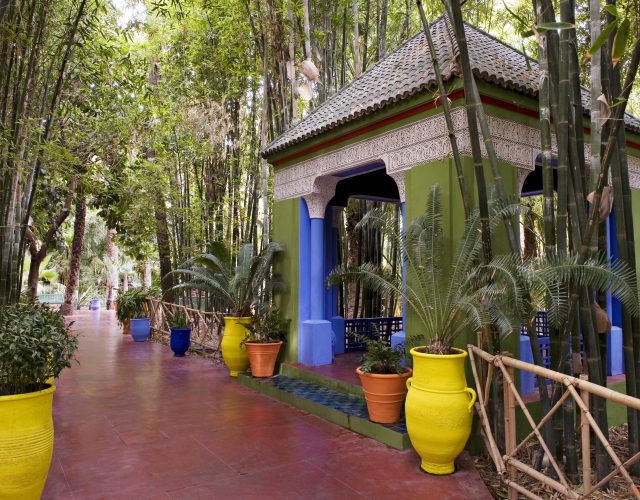
Discover Marrakech’s Gardens
Marrakech’s gardens offer a tranquil escape from the heat and noise of the city, showcasing lush greenery and stunning landscapes.
-
- Majorelle Garden: This vibrant garden was designed by French painter Jacques Majorelle and later restored by fashion designer Yves Saint Laurent. Its striking cobalt-blue buildings, exotic plants, and fountains make it one of the most picturesque spots in Marrakech.
- Menara Gardens: Located at the foot of the Atlas Mountains, the Menara Gardens are a peaceful oasis with olive groves and a large reflective pool. The view of the distant mountains against the garden’s tranquil setting is breathtaking.
- Le Jardin Secret: A hidden gem in the heart of the medina, Le Jardin Secret features both Islamic and exotic gardens, with pathways and pavilions providing a serene atmosphere.
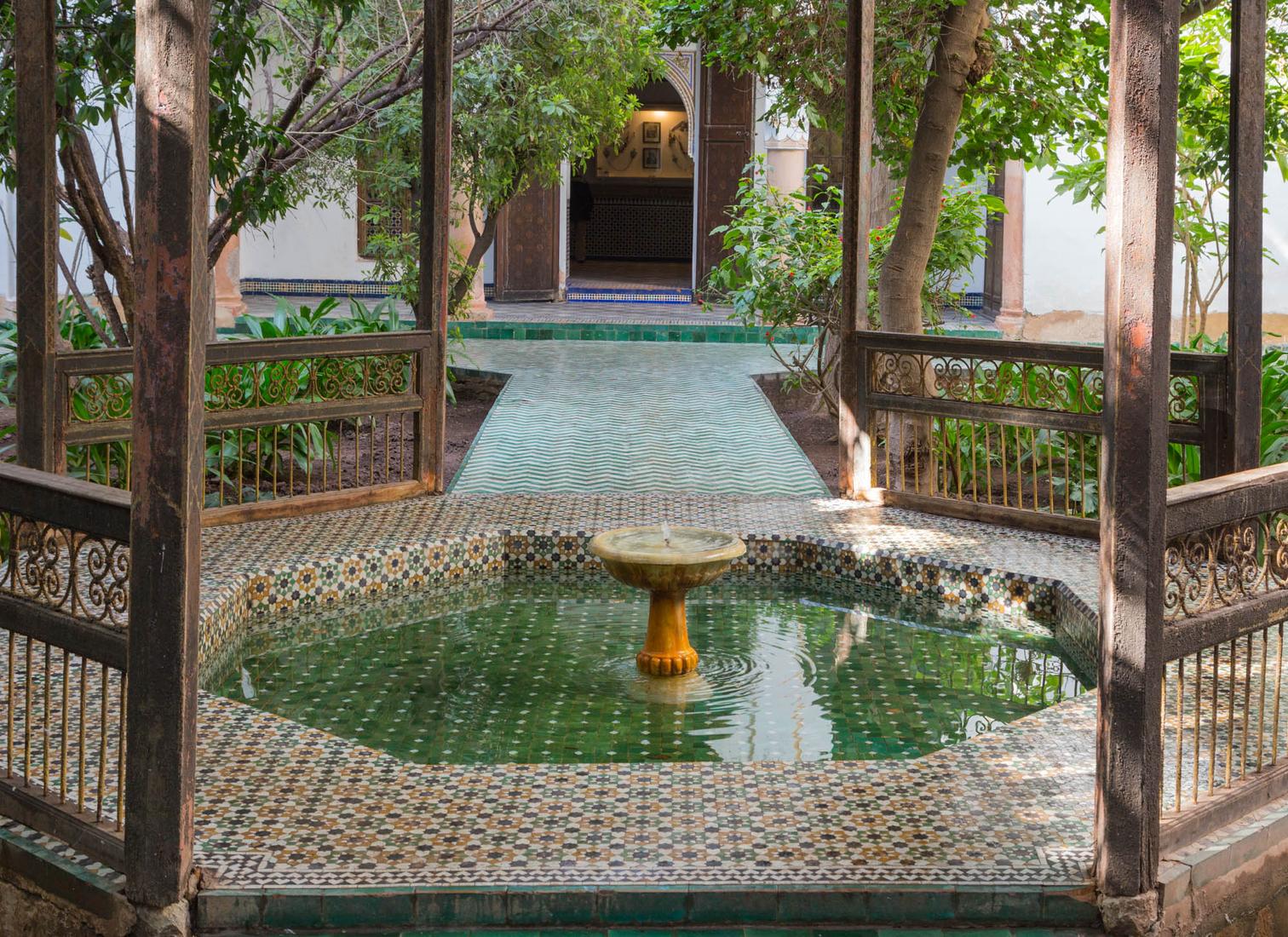
Explore the Museums and Cultural Institutions
Marrakech is a city rich in culture and history, and its museums reflect its artistic and intellectual heritage.
-
- Museum of Marrakech: Housed in a beautiful 19th-century palace, this museum showcases traditional Moroccan arts, including ceramics, textiles, and jewelry, as well as temporary exhibitions.
- The Yves Saint Laurent Museum: Fashion lovers should not miss this museum dedicated to the legendary designer Yves Saint Laurent, who had a deep connection with Marrakech. The museum houses a collection of his iconic works and offers insight into his life and influence.
- Dar Si Said Museum: Located near Bahia Palace, this museum is dedicated to Moroccan crafts, particularly woodwork. The building itself is a work of art, with stunning courtyards and rooms adorned with intricate carvings and zellij.
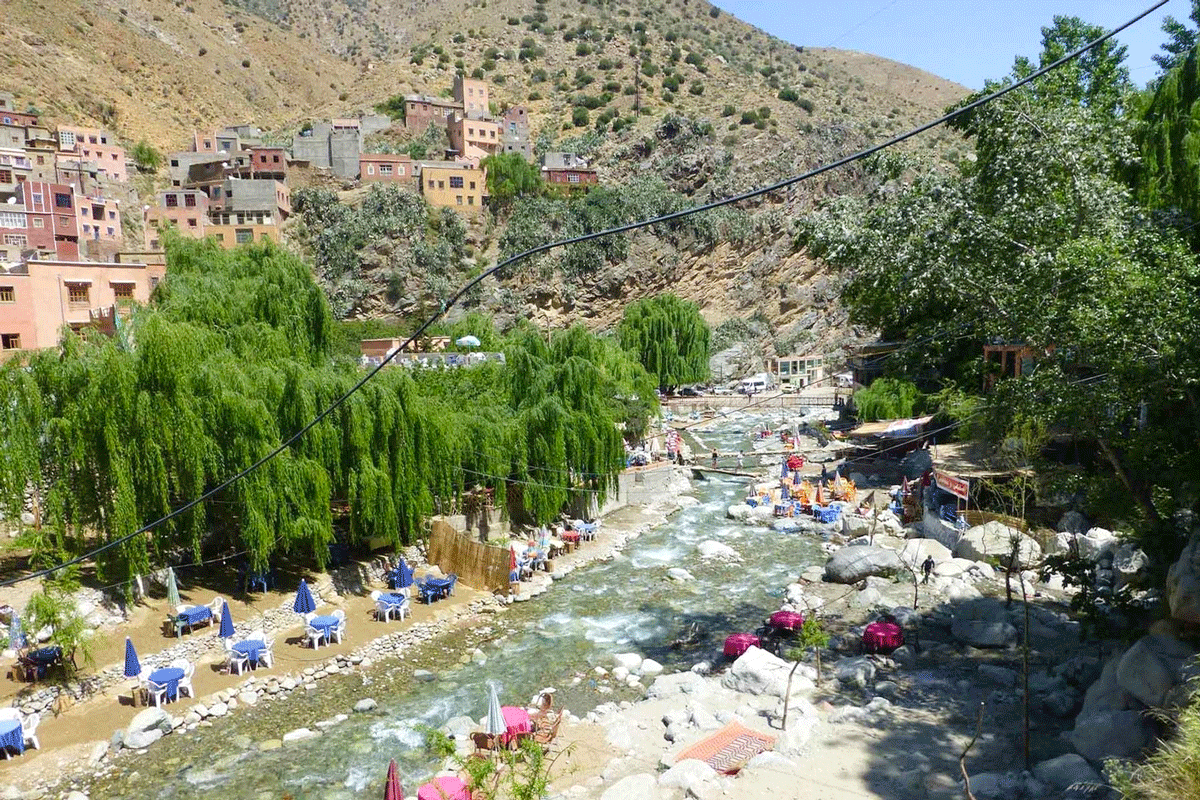
Take a Day Trip from Marrakech
Marrakech’s location makes it an ideal base for exploring other parts of Morocco.
-
- Ourika Valley: Just an hour’s drive from Marrakech, the Ourika Valley offers breathtaking views of the Atlas Mountains, traditional Berber villages, and beautiful waterfalls. It’s a great escape for hiking and nature lovers.
- Ouzoud Waterfalls: These stunning waterfalls, located about 2.5 hours from Marrakech, are the tallest in Morocco. The cascades drop over 100 meters, and the surrounding area is perfect for a scenic hike and a traditional Moroccan meal at a nearby restaurant.
- Ait Ben Haddou: This UNESCO World Heritage site, about 3 hours from Marrakech, is a fortified village made of clay and stone, famous for its appearance in films like “Gladiator” and “Game of Thrones.” It’s a must-visit for history buffs and film enthusiasts alike.
Where to Stay in Marrakech
Marrakech offers a range of accommodations, from budget hostels to luxurious riads and high-end hotels. Staying in a riad is a quintessential Marrakech experience.
- Riads: Riads are traditional Moroccan houses built around a central courtyard, offering a more intimate and authentic experience.
-
- Riad Be Marrakech: A beautifully designed riad with traditional Moroccan decor and modern amenities. It’s located in the medina, close to major attractions.
- Riad Yasmine: A stunning riad with a picturesque courtyard and pool, offering a peaceful escape from the busy medina.
- Riad El Fenn: A luxurious riad with chic, bohemian decor and a rooftop terrace offering panoramic views of the Koutoubia Mosque.
-
- Luxury Hotels: For those seeking modern luxury, Marrakech is home to several high-end hotels with top-notch amenities.
-
- Royal Mansour: A palace-like hotel offering the ultimate in luxury and privacy, with individual riads, a spa, and fine dining restaurants.
- La Mamounia: A legendary hotel known for its opulence, lush gardens, and world-class service. It’s a favorite among celebrities and dignitaries.
-
What to Eat in Marrakech
Moroccan cuisine is a highlight of any trip to Marrakech, with its rich flavors and fragrant spices. Here are some must-try dishes:
-
- Tagine: This slow-cooked stew is made with lamb, chicken, or beef, combined with vegetables, dried fruits, and a blend of spices. It’s served in a conical clay pot, which gives the dish its name.
- Couscous: A traditional Friday meal in Morocco, couscous is served with vegetables and meat, often flavored with saffron and other spices.
- Pastilla: A savory-sweet pie made with layers of thin pastry, filled with pigeon or chicken, almonds, and cinnamon. It’s a signature dish of Moroccan cuisine.
- Harira: A hearty soup made with tomatoes, lentils, chickpeas, and lamb, typically served during Ramadan but available year-round.
- Mechoui: Slow-roasted lamb, typically prepared for special occasions, is a must-try for meat lovers.
- Mint Tea: Known as “Moroccan whiskey,” mint tea is the drink of choice in Morocco and is served with almost every meal. It’s sweet, refreshing, and a key part of Moroccan hospitality.
Shopping in Marrakech
Shopping in Marrakech is a thrilling experience, especially in the medina’s souks. Bargaining is expected, so be prepared to haggle for the best price.
-
- Leather Goods: Marrakech is famous for its high-quality leather products, from bags and wallets to slippers and belts.
- Rugs and Carpets: Moroccan rugs are world-renowned, and you’ll find a variety of styles, from colorful Berber rugs to intricate handwoven designs.
- Spices: The souks are filled with fragrant spices like saffron, cumin, and ras el hanout, a unique Moroccan blend of spices.
- Handicrafts: From pottery and ceramics to brass lanterns and intricate woodwork, Marrakech’s souks offer a wide range of handmade crafts.
Practical Tips for Visiting Marrakech
-
- Currency: The local currency is the Moroccan dirham (MAD). It’s best to carry some cash, as smaller vendors may not accept credit cards.
- Language: While Arabic is the official language, French is widely spoken, and you’ll find English speakers in most tourist areas.
- Getting Around: The best way to explore the Medina is on foot, as cars are not allowed inside its narrow streets. For longer distances, taxis are readily available, and you can also use local buses or hire a driver.
- Safety: Marrakech is generally safe for tourists, but like any major city, it’s important to be aware of your surroundings. Watch out for pickpockets in crowded areas like Jamaa El Fna and the souks.
- Respect Local Customs: Marrakech is a predominantly Muslim city, and it’s important to dress modestly, especially when visiting religious sites. Women should cover their shoulders and knees, while men should avoid wearing shorts.
Marrakech is a city of contrasts, where ancient traditions blend seamlessly with modern luxury. From the bustling medina and colorful souks to serene gardens and opulent palaces, Marrakech offers a captivating mix of history, culture, and adventure. Whether you’re exploring the city’s historical landmarks, savoring Moroccan cuisine, or shopping for handmade crafts, Marrakech is sure to leave a lasting impression on any traveler.



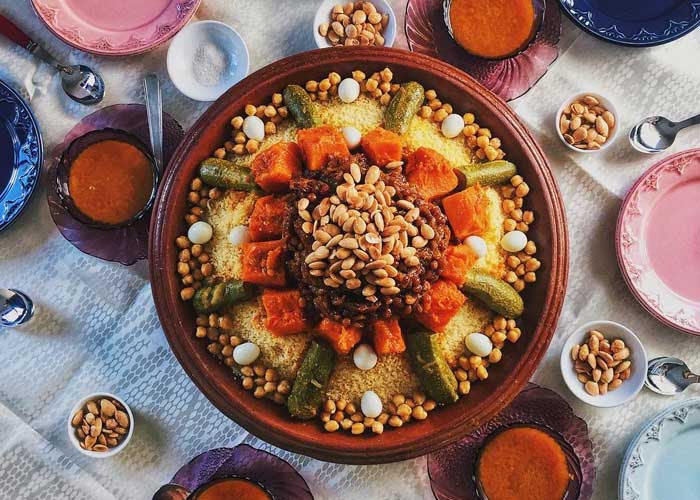
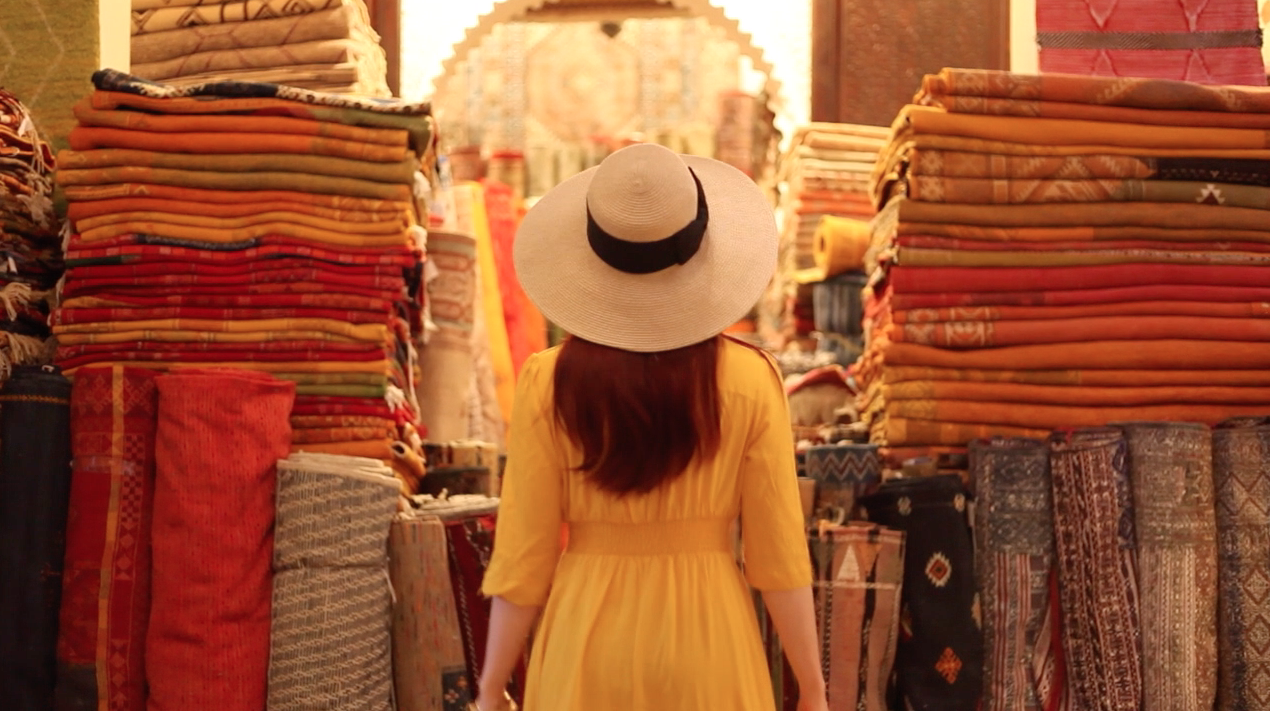
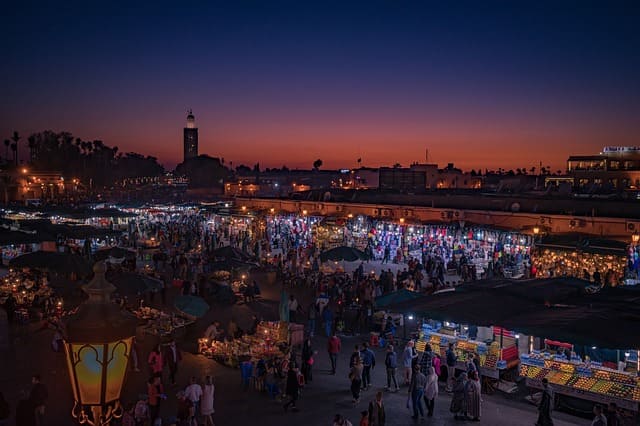
Marrakech is truly a fascinating city where you can easily move from the vibrant hustle and bustle of the souks to the serenity of gardens like the Majorelle. I love this duality between tradition and modernity that makes each visit unique.
Marrakech is a city of contrasts that captivates the heart. The lively energy of the souks blends beautifully with the peacefulness of the Majorelle Garden. It’s this balance of old and new that makes every visit feel fresh and unforgettable.
Riad Yasmine looks like an incredible place to stay in the heart of the medina! There’s nothing like a traditional Moroccan accommodation to fully immerse yourself in the Moroccan atmosphere.
Absolutely! Staying at Riad Yasmine is like stepping into a beautiful Moroccan dream — the intricate decor, peaceful courtyard, and authentic vibe make it the perfect retreat after a day exploring the medina. Truly an experience to remember!
Moroccan cuisine is to die for! I’m particularly curious to try pastilla; this sweet and savory combination seems truly original and delicious.
Pastilla is definitely a must-try! That perfect blend of sweet and savory flavors wrapped in flaky pastry makes it a unique Moroccan delight. I hope you get to taste it soon — it’s truly unforgettable!
What is your favorite garden in Marrakech? Do you prefer the vibrant beauty of the Majorelle Gardens or the tranquility of the Menara Gardens?
That’s a tough choice! I love the vibrant colors and artistic vibe of the Majorelle Gardens, but the peaceful olive groves and reflective pool of the Menara Gardens offer such a calming escape. Both have their own unique charm